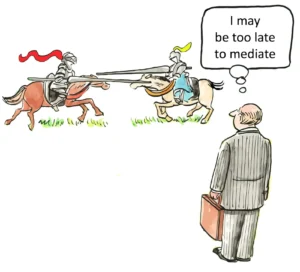Intellectual Property Protection: A Comprehensive Guide to Legal Rights and Constitutional Safeguards
Individuals seeking to protect their creative works and innovations frequently ask, “What are the fundamental principles and legal frameworks involved in intellectual property protection in the United States?” The answer lies in a sophisticated system of constitutional protections, federal statutes, and state laws that collectively safeguard creations of the mind including inventions, artistic works, trademarks, and trade secrets. Unlike many areas of law that developed through common law tradition, intellectual property protection stems directly from constitutional authority granted to Congress, creating a unified federal framework that promotes innovation while respecting creators’ rights.
Modern intellectual property law operates through four primary categories: patents protecting inventions and discoveries, copyrights securing artistic and literary works, trademarks preserving commercial identities, and trade secrets maintaining competitive advantages through confidential business information. This comprehensive system reflects foundational American principles that recognize individual creativity and innovation as fundamental drivers of economic prosperity and technological advancement.
The constitutional framework supporting intellectual property protection demonstrates the Founders’ prescient understanding that securing exclusive rights to creators would incentivize innovation and artistic expression while ultimately benefiting society through expanded knowledge and cultural enrichment. This balance between individual rights and public benefit remains central to contemporary intellectual property debates and policy development.
What Is Intellectual Property Protection Under Constitutional Law?
Intellectual property protection encompasses legal mechanisms designed to secure exclusive rights to creations arising from mental labor, including inventions, designs, and artistic works. The constitutional foundation for these protections derives from Article I, Section 8, Clause 8 of the United States Constitution, commonly known as the Intellectual Property Clause or Patent and Copyright Clause.
This constitutional provision grants Congress enumerated power “To promote the progress of science and useful arts, by securing for limited times to authors and inventors the exclusive right to their respective writings and discoveries”. The Framers deliberately included this clause to replace the patchwork of state-law protections that existed under the Articles of Confederation, recognizing that national uniformity in intellectual property law was essential for effective protection and economic development.
The utilitarian purpose underlying the Intellectual Property Clause seeks to maximize scientific and artistic progress by balancing innovation incentives against potential restrictions on access to knowledge and creative works. This constitutional framework attempts to achieve optimal outcomes by including two fundamental limitations: exclusive rights may only be granted for limited time periods, and such rights must serve the broader purpose of promoting progress in science and useful arts.
Courts have interpreted these constitutional limitations with considerable deference to Congressional judgment. The Supreme Court upheld the Copyright Term Extension Act of 1998, which extended copyright duration to the life of the author plus seventy years, demonstrating judicial reluctance to second-guess legislative determinations about appropriate term lengths. This deference reflects recognition that Congress possesses superior institutional capacity to evaluate complex economic and social factors affecting intellectual property policy.
How Does Intellectual Property Protection Affect Constitutional Rights?
Constitutional property rights under the Fifth and Fourteenth Amendments provide fundamental protections for intellectual property interests that courts have consistently recognized and enforced. The Supreme Court’s decision in Ruckelshaus v. Monsanto Company established that trade secrets constitute “property” under the Takings Clause, requiring just compensation for unauthorized government use or disclosure.
This constitutional recognition extends beyond trade secrets to encompass patents and copyrights as protected property interests under Due Process Clauses. The Court has held that patents represent “property” under the Fourteenth Amendment’s Due Process Clause, while repeatedly affirming that intellectual property rights deserve the same constitutional protections accorded to tangible property interests.
The Takings Clause analysis applied to intellectual property follows established precedent treating such rights as fundamental property interests deserving constitutional protection. An 1882 Supreme Court decision, quoted favorably in recent opinions, declared that patents confer “exclusive property in the patented invention which cannot be appropriated or used by the government itself, without just compensation, any more than it can appropriate or use without compensation land which has been patented to a private purchaser”.
Constitutional preemption principles limit state authority to regulate intellectual property in ways that conflict with federal statutory schemes or undermine uniform national policy. States cannot offer patent-like protection to subject matter of expired patents or create regimes that effectively circumvent federal patent policy requiring ideas placed before the public without valid patent protection to remain available for appropriation.
However, states retain authority to prescribe reasonable regulations protecting citizens from fraud in intellectual property transfers and to maintain traditional areas of state law that complement rather than conflict with federal intellectual property policy. This division of authority reflects federalism principles while ensuring national uniformity in core intellectual property protections.
What Are the Key Types of Intellectual Property Protection?
Patent protection represents the most comprehensive form of intellectual property rights, granting inventors exclusive authority over their discoveries for twenty years from the filing date. The United States Patent and Trademark Office administers patent applications, examining each submission to ensure compliance with patentability requirements including novelty, non-obviousness, and utility.
Utility patents protect new and useful processes, machines, manufactures, or compositions of matter, while design patents secure ornamental designs for articles of manufacture. The America Invents Act transformed the United States patent system from “first to invent” to “first inventor to file,” aligning American practice with international standards while reducing litigation complexity surrounding invention priority.
Plant variety protection provides specialized intellectual property rights for sexually reproduced crops under the Plant Variety Protection Act, administered by the United States Department of Agriculture. These certificates offer weaker protection than utility patents, including breeders’ exemptions allowing protected varieties for further breeding and farmers’ exemptions permitting saved seed use.
Copyright protection secures original works of authorship fixed in tangible media, including literary works, musical compositions, dramatic productions, artistic creations, and increasingly, computer software and digital content. Federal copyright law, codified in Title 17 of the United States Code, provides automatic protection upon creation with registration offering enhanced enforcement benefits and statutory damage availability.
Contemporary copyright protection extends for the life of the author plus seventy years for individual works, while corporate works receive protection for ninety-five years from publication or one hundred twenty years from creation, whichever expires first. These extended terms reflect Congressional judgment about appropriate incentive structures for creative production in modern economic environments.
Trademark protection preserves commercial identities and prevents consumer confusion through exclusive rights to distinctive marks used in commerce. The Lanham Act provides federal trademark registration and protection, while state laws offer additional remedies for trademark infringement and unfair competition within state boundaries.
Trade secret protection maintains competitive advantages through legal mechanisms preserving confidential business information that derives independent economic value from secrecy. Most states have adopted the Uniform Trade Secrets Act, while the federal Defend Trade Secrets Act provides enhanced protections against cyber theft and industrial espionage.
How Do Federal and State Laws Interact in Intellectual Property Protection?
Federal preemption in intellectual property law creates complex interactions between national uniformity requirements and traditional state law authority. The constitutional mandate for promoting progress in science and useful arts through national intellectual property policy limits state authority to create conflicting or inconsistent protection regimes.
States cannot enact laws that would “stand as an obstacle to the accomplishment and execution of the full purposes and objectives of Congress” or that “clash with the balance struck by Congress” in federal intellectual property legislation. This preemption doctrine prevents states from offering patent-like protection for expired patent subject matter or creating regimes that would undermine federal policy requiring unpatentable ideas to remain in the public domain.
State law limitations particularly affect patent and copyright areas where federal authority is most comprehensive. States may not use unfair competition law to prevent copying of items lacking patent protection due to insufficient novelty or non-obviousness, nor create patent-like regimes prohibiting copying of unpatented industrial designs.
However, states retain significant authority over trade secret protection through adoption of the Uniform Trade Secrets Act and related confidential information statutes. State trade secret laws complement federal protections while addressing local enforcement needs and providing additional remedies for misappropriation occurring within state boundaries.
Trademark law involves both federal and state components, with the Lanham Act providing national registration and interstate commerce protection while state laws address intrastate trademark use and local enforcement issues. This dual system allows comprehensive protection matching the territorial scope of commercial activities while maintaining appropriate federal oversight for interstate commerce.
State courts play essential roles in intellectual property enforcement through adjudication of federal claims under supplemental jurisdiction and state law claims involving trade secrets, unfair competition, and trademark infringement within state boundaries. This cooperative federalism approach maximizes enforcement effectiveness while respecting jurisdictional limitations and constitutional authority divisions.
What Are Recent Trends in Intellectual Property Law?
Artificial intelligence impact on intellectual property law presents unprecedented challenges requiring legislative and judicial adaptation to technological realities. Current debates center on whether AI systems can qualify as inventors for patent purposes, who owns AI-generated creative works under copyright law, and how traditional intellectual property frameworks apply to machine learning and automated creation processes.
The United States Patent and Trademark Office continues evaluating whether AI can be listed as an inventor on patent applications, while courts grapple with ownership questions surrounding AI-generated inventions and creative works. These developments require careful balance between encouraging technological innovation and maintaining coherent intellectual property doctrine grounded in human creativity and invention.
Blockchain technology applications offer significant advantages for intellectual property protection and enforcement, including timestamped proof of ownership, automated licensing through smart contracts, and decentralized registry systems reducing ownership disputes. These technological tools provide enhanced mechanisms for combating counterfeit goods and enforcing intellectual property rights more efficiently across global markets.
Digital copyright challenges have intensified with expanding online commerce and content distribution platforms. The Digital Millennium Copyright Act provides safe harbor protections for intermediaries while establishing notice-and-takedown procedures, but enforcement gaps remain significant particularly for foreign-hosted content and sophisticated infringement schemes.
Recent judicial decisions continue reshaping patent eligibility standards and fair use doctrines in response to technological advancement and changing commercial practices. The Supreme Court and Federal Circuit courts regularly address questions about patentable subject matter, particularly in biotechnology, software, and business method areas where traditional patent concepts require adaptation to contemporary innovation.
International trade implications increasingly influence domestic intellectual property policy as globalization demands alignment with international frameworks and cross-border enforcement mechanisms. Trade agreements include intellectual property provisions affecting domestic law development, while international disputes over intellectual property rights create diplomatic and economic pressures for policy adaptation.
How Do Intellectual Property Rights Influence Business and Innovation?
Cross-border mergers and acquisitions depend significantly on intellectual property rights protection in host countries, with robust IP regimes attracting substantially more foreign direct investment than jurisdictions with weak enforcement mechanisms. United States multinational enterprises particularly value strong intellectual property protections when evaluating international expansion opportunities and strategic acquisitions.
Research demonstrates that host country intellectual property rights protection has more substantial positive impact on cross-border merger and acquisition activities than protectionist policies alone. This finding supports arguments that strong intellectual property protection promotes economic development and international investment more effectively than trade barriers or discriminatory policies.
Business strategy development increasingly centers on intellectual property portfolio management as intangible assets represent more than eighty percent of value for firms listed in the S&P 500 index. Modern businesses must integrate intellectual property considerations into competitive strategy, product development, and market entry decisions to maintain sustainable competitive advantages.
Innovation incentives created by intellectual property protection directly influence research and development investment decisions across industries. Strong patent protection encourages companies to invest in risky, long-term research projects by providing exclusive rights to commercialize successful innovations and recover development costs through market exclusivity.
However, intellectual property protection must balance innovation incentives against potential negative effects on follow-on innovation and competition. Overly broad or lengthy protection periods may stifle subsequent innovation by preventing competitors from building upon existing technologies or creative works.
Technology transfer mechanisms depend on intellectual property protection to facilitate knowledge diffusion from research institutions to commercial applications. Universities and government agencies rely on patent and licensing systems to transfer innovations to private companies while generating revenue supporting continued research activities.
What Are the Challenges in Enforcing Intellectual Property Rights?
Digital infringement presents unprecedented enforcement challenges as traditional territorial limitations become meaningless in global internet environments. Online platforms enable rapid, large-scale copyright and trademark infringement that overwhelms conventional enforcement mechanisms designed for physical goods and localized markets.
Intermediary liability rules attempt to balance platform innovation incentives against intellectual property protection through safe harbor provisions and notice-and-takedown procedures. The Digital Millennium Copyright Act provides intermediaries with protection from secondary liability when they comply with statutory requirements for removing infringing content upon proper notice.
However, significant differences exist between United States and international approaches to intermediary liability. While American law provides broad platform protections encouraging innovation, other jurisdictions impose greater monitoring obligations on intermediaries, creating compliance challenges for global platforms operating across multiple legal regimes.
Enforcement resource limitations affect both private rights holders and government agencies responsible for intellectual property protection. The National Intellectual Property Rights Coordination Center leads federal enforcement efforts, but limited resources require strategic prioritization focusing on cases with greatest economic impact and deterrent effect.
Private enforcement depends on rights holders’ willingness and ability to pursue costly litigation against infringers. Small businesses and individual creators often lack resources necessary for effective intellectual property enforcement, creating practical limitations on protection availability despite strong legal frameworks.
International enforcement coordination becomes increasingly complex as infringement activities span multiple jurisdictions with varying legal standards and enforcement capabilities. Effective protection requires cooperation between national enforcement agencies, international organizations, and private rights holders operating across borders.
How Should Property Owners Protect Their Intellectual Property?
Filing procedures with the United States Patent and Trademark Office require careful attention to statutory requirements and deadlines that affect protection scope and enforceability. Patent applications must include detailed descriptions, drawings, and claims defining invention scope, while trademark applications require use in commerce and distinctive character demonstrations.
Professional legal counsel becomes essential for complex intellectual property portfolios involving multiple jurisdictions, sophisticated technologies, or valuable commercial assets. State bar associations can recommend experienced attorneys specializing in intellectual property law who understand both federal statutory requirements and local enforcement procedures.
International filing strategies require coordination across multiple jurisdictions since intellectual property rights are territorial and do not extend automatically to foreign countries. Most countries operate “first to file” systems for patents and trademarks, making early filing essential for securing international protection.
Portfolio management strategies should align with business objectives and competitive landscapes while considering cost-benefit analyses for different protection mechanisms. Not all innovations or creative works justify expensive patent or registration procedures, requiring strategic decisions about which intellectual property assets warrant formal protection.
Enforcement preparation includes maintaining detailed records of creation, development, and commercialization activities that support ownership claims and damages calculations in potential litigation. Documentation should include invention notebooks, creation dates, marketing materials, and commercial use evidence.
What Are Conservative Perspectives on Intellectual Property Protection?
Property rights theory within conservative legal philosophy views intellectual property as fundamental ownership interests deserving constitutional protection equivalent to tangible property rights. This perspective emphasizes that intellectual property protection serves essential functions supporting individual liberty, economic development, and technological progress through secure ownership incentives.
Conservative scholars argue that property rights, including intellectual property rights, “support self governance as an engine of free expression” and provide stabilizing effects essential for ordered liberty and economic prosperity. This view treats intellectual property protection as natural rights deserving recognition rather than mere government-granted privileges subject to arbitrary modification.
Constitutional originalism supports intellectual property protection through historical evidence that the Founding generation understood patents and copyrights as property interests deserving constitutional protection. The Intellectual Property Clause reflects deliberate constitutional design intended to promote innovation while recognizing individual ownership rights in creative and inventive works.
However, conservative libertarian perspectives sometimes question whether current intellectual property protection extends too far beyond constitutional purposes, particularly regarding lengthy copyright terms and broad patent scope that may inhibit competition and follow-on innovation. These critics argue that intellectual property protection should focus narrowly on promoting innovation rather than creating perpetual monopolies.
Judicial restraint principles counsel deference to Congressional judgments about appropriate intellectual property protection levels while recognizing constitutional limitations on government authority to restrict property rights. Conservative jurists typically support strong intellectual property protection within constitutional boundaries while opposing judicial activism that would expand or contract protection beyond statutory authorization.
Free market advocacy within conservative thought emphasizes that intellectual property protection promotes competition and innovation by ensuring inventors and creators can recover investment costs and profit from successful innovations. This perspective views intellectual property rights as essential infrastructure supporting entrepreneurship and technological advancement in market economies.
What Role Does Intellectual Property Play in National Security and Defense?
Defense procurement involves sophisticated intellectual property management systems addressing government acquisition of proprietary technologies while protecting contractor rights and national security interests. The Department of Defense maintains specialized procedures for identifying, licensing, and managing intellectual property rights created during defense contracts.
Federal agencies acquiring intellectual property rights bear obligations to ensure legal protection, submit patent applications, and maintain patents in force when appropriate. These responsibilities reflect recognition that government-funded innovation should receive adequate protection to encourage continued private sector participation in defense research and development.
Technology transfer mechanisms from defense research to commercial applications depend on intellectual property protection to facilitate knowledge diffusion while maintaining national security controls over sensitive technologies. Effective technology transfer policies balance public benefit from government-funded research against security requirements and private sector incentives for continued innovation.
International competition considerations increasingly influence intellectual property policy as economic and technological leadership becomes intertwined with national security interests. Trade disputes over intellectual property rights reflect broader strategic competition between nations seeking technological advantage and economic dominance.
The evolution of United States intellectual property policy toward China demonstrates how intellectual property protection has become elevated to national security strategy level, combining traditional protection mechanisms with economic sanctions and diplomatic pressure. These developments illustrate growing recognition that intellectual property policy affects national competitiveness and security interests beyond traditional commercial considerations.
How Do Emerging Technologies Challenge Traditional Intellectual Property Frameworks?
Non-fungible tokens and blockchain technologies create new categories of digital assets requiring innovative approaches to intellectual property protection. Traditional copyright and trademark frameworks must adapt to address ownership, licensing, and enforcement questions surrounding virtual goods and digital collectibles operating in decentralized systems.
Intellectual property disputes over virtual goods and NFTs are increasing as markets develop and legal frameworks struggle to address novel questions about ownership, infringement, and enforcement in digital environments. Courts must determine whether existing intellectual property doctrines adequately address these emerging technologies or require legislative adaptation.
Biotechnology innovations continue challenging traditional patent law boundaries as genetic engineering, synthetic biology, and personalized medicine create inventions that blur distinctions between natural phenomena and human innovation. Patent eligibility standards must evolve to address scientific advances while maintaining coherent doctrinal frameworks.
Software and artificial intelligence applications raise fundamental questions about patent subject matter eligibility, copyright protection for code and databases, and ownership of machine-generated works. These technologies require careful balance between encouraging innovation and preventing overly broad protection that might stifle competition and subsequent development.
The integration of artificial intelligence into creative processes challenges traditional assumptions about human authorship underlying copyright law. Legal systems must determine whether AI-generated works qualify for copyright protection, who owns such works, and how to address liability for AI systems that infringe existing intellectual property rights.
What Are Best Practices for Intellectual Property Risk Management?
Due diligence procedures in business transactions must include comprehensive intellectual property assessments covering ownership verification, infringement risk evaluation, and portfolio valuation. Mergers, acquisitions, and licensing agreements require careful analysis of intellectual property assets and liabilities that may significantly affect transaction value and future business operations.
Employee and contractor management involves implementing policies and agreements that address intellectual property ownership, confidentiality obligations, and post-employment restrictions. Clear contractual provisions help prevent disputes over ownership of work-related innovations and protect trade secrets from unauthorized disclosure.
Competitive intelligence gathering must comply with intellectual property laws while providing businesses with legitimate information about market conditions and competitor activities. Companies must balance information gathering needs against risks of trade secret misappropriation, patent infringement, and unfair competition claims.
Insurance considerations include evaluating coverage options for intellectual property litigation defense, infringement claims, and portfolio protection. Intellectual property insurance can provide valuable protection against enforcement costs and damage awards while enabling more aggressive enforcement strategies against infringers.
International compliance requires understanding intellectual property laws in all jurisdictions where businesses operate, including filing requirements, enforcement procedures, and cultural differences affecting business practices. Global intellectual property strategies must account for varying legal standards and enforcement capabilities across different countries and regions.
Conclusion: Constitutional Principles and Intellectual Property Protection
Intellectual property protection represents a cornerstone of American constitutional law and economic policy, reflecting fundamental principles that balance individual rights with public welfare through carefully structured incentive systems. The constitutional framework established by the Founders demonstrates prescient understanding that securing exclusive rights to creators would drive innovation and cultural development while ultimately enriching society through expanded knowledge and artistic expression.
Conservative legal philosophy strongly supports intellectual property protection as essential property rights deserving constitutional protection equivalent to tangible assets. This perspective recognizes that secure ownership incentives encourage risk-taking, investment, and creative effort necessary for technological advancement and economic prosperity. The Supreme Court’s consistent recognition of intellectual property as constitutionally protected property under Due Process and Takings Clauses affirms these fundamental principles.
Modern intellectual property challenges require careful attention to constitutional limitations while adapting legal frameworks to address technological innovations and changing commercial practices. Artificial intelligence, blockchain technologies, and global digital markets present unprecedented questions that must be resolved within established constitutional and statutory frameworks while preserving the delicate balance between innovation incentives and public access to knowledge.
The territorial nature of intellectual property rights and the increasing importance of international coordination require sophisticated legal strategies that account for varying national approaches to protection and enforcement. American leadership in intellectual property policy depends on maintaining strong domestic protections while engaging constructively with international partners to develop compatible frameworks supporting global innovation and commerce.
Effective intellectual property protection ultimately serves broader constitutional principles by fostering ordered liberty, economic development, and individual achievement within market-based systems that reward innovation and creativity. The legal profession plays an essential role in maintaining these protections through competent representation, strategic counseling, and advocacy for coherent policy development that honors constitutional principles while addressing contemporary challenges facing creators, inventors, and the broader economy dependent on intellectual property rights for continued growth and prosperity.
- Comprehensive Legal Encyclopedia Intellectual Property Law Guide
- US State Department International Intellectual Property Enforcement Office
- Cornell Law School Constitutional Intellectual Property Clause Analysis
- Heritage Foundation Intellectual Property Policy Research Paper
- Cornell Law Constitutional Commentary State IP Regulation
- American Public University Intellectual Property Law Overview
- National Institute Health Biomedical IP Research Study
- IPR Center Federal Intellectual Property Crime Investigation
- USPTO Small Medium Enterprise IP Protection Toolkit
- US Department Commerce International Trade IP Protection Guide













